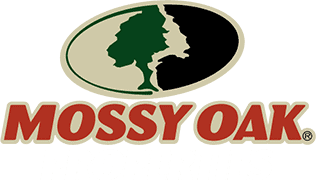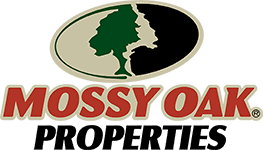What is Frost Seeding?
Frost seeding is a simple planting method that uses the natural freeze-thaw cycles to work seeds into the soil without tilling. Many landowners use this approach to enhance food plots, rejuvenate pastures, and improve soil health. It works by spreading seeds on frozen ground, then as the ground thaws and refreezes, it naturally cracks. These cracks help pull the seeds down into the soil without needing any machines. Mossy Oak Properties helps people find land for sale that works well for frost seeding and wildlife management. This method is great for growing clover and other plants that help support wildlife on your property.
When to Frost Seed Clover for Best Results
The best time for frost seeding is late winter to early spring when temperatures drop below freezing at night but warm up during the day. This pattern creates the soil movement needed to set the seeds properly. The timing changes depending on where you live.
If you are in the Northern States, aim for late February through early March when snow starts to melt but the ground still freezes at night. For the Midwest and East, mid-March usually offers the right balance. Southern States have an earlier window; late January through early February works best before it gets too warm.
For best results, you need minimal plant growth when you seed. The ground should have short enough plants that seeds can touch the soil surface. Most successful landowners suggest spreading seed on areas with no more than 2-3 inches of growth or on patches where thin snow shows bare soil.
Why Frost Seeding Works for Clover
Frost seeding does not need tilling, which means less soil disruption and faster, more natural seed placement. This method saves money since you do not need heavy equipment beyond basic seed spreaders. Many landowners benefit from saving on fuel, equipment, and labor compared to regular planting methods.
Food plots made through frost seeding give year-round food for deer, turkey, and helpful insects. Clover works really well with frost seeding because its small, round seeds are able to make good contact with soil and handle changing temperatures well. Frost-seeded clover often grows 2-3 weeks faster than traditionally planted clover in many soil types. This early start helps the plants compete against weeds and grasses that come up in early spring. The natural seeding process helps plants grow deeper roots, which helps them survive dry periods better than plants grown with more disruptive methods. Clover grown this way typically has protein levels of 20-30%, making it great food for wildlife.
How to Frost Seed Clover: Step by Step
Step 1: Pick the Right Clover
Red clover grows fast and works well for short-term food plots, usually lasting 2-3 years before you need to plant again. White clover is a long-term option, making it great for wildlife plots that can last 5+ years with proper care. Crimson clover handles cold well and attracts deer with its bright flowers and high protein. Many successful land managers mix clover types to extend feeding periods and make their plots more resilient.
Step 2: Prepare the Area
Mow or lightly graze the area to reduce thick plants that would block seeds from touching soil. You should aim to see about 50% bare soil. Avoid disturbing the soil with heavy equipment, as keeping the natural ground shape helps the freeze-thaw action work best. For plots with too much plant growth, mowing in late fall helps break down plant material over winter.
Step 3: Spread Seeds Evenly
Use hand spreaders for small areas or ATV-mounted seeders for bigger plots to spread seed evenly across the area. Most clovers need between 5-10 pounds per acre, depending on type and soil conditions. Split your seeds into two equal parts and spread in crossing directions to avoid missing spots. Morning spreading often works best, letting seeds settle before afternoon thaws begin.
Step 4: Let Nature Do Its Work
After spreading, let natural weather do the job of pulling seeds into the soil. This process usually takes 7-14 days of alternating freeze-thaw cycles. The ground expands and contracts, naturally working seeds down to the right depth. Stay off seeded areas during this time to prevent packing down the soil. Light snow after seeding actually helps by providing moisture and gentle pressure.
Step 5: Watch and Care for Your Plot
Look for early growth signs as temperatures warm up, usually 3-4 weeks after seeding. Add some fertilizer based on soil tests once young plants reach about 2 inches tall. Early growth does best with fertilizers that help root growth. Keep an eye on rainfall and only water during very dry spells that last more than two weeks.
Common Frost Seeding Mistakes to Avoid
One big mistake is seeding too late, when warmer weather prevents seeds from settling into the soil properly. When daytime temperatures regularly go above 60°F, the freeze-thaw action is not strong enough to place seeds correctly.
Another problem is poor seed-to-soil contact from too much plant material, which blocks seeds from reaching soil where they can grow. Plots with more than 4 inches of leftover growth show 40-60% less success in seed sprouting.
Using too much seed creates unnecessary competition among young plants, reducing both healthy growth and overall results. Following the suggested amounts prevents wasting seed and money while producing stronger plants.
Many plots suffer when people neglect basic care after planting. Light mowing in early summer helps clover beat out weeds and encourages new growth. Keeping plants between 4-8 inches tall through occasional mowing keeps your plot productive throughout growing seasons.
Why Landowners Use Frost Seeding for Food Plots
Improving wildlife habitat is one of the main reasons property owners use frost seeding. Deer and turkey benefit greatly from the high-protein food that clover provides throughout the growing seasons. Research shows that properties with well-maintained clover plots often show 15-20% more wildlife activity compared to similar lands without managed food areas.
The thick growth pattern of established clover helps hold soil in place and keeps nutrients from washing away. A well-managed clover can reduce soil erosion by up to 60% compared to bare ground or yearly crop areas. Many landowners see clear improvements in land value when properties have well-maintained food plots. Real estate data suggests that hunting properties with established food areas sell for 5-15% more in many markets.
Finding the Best Land for Frost Seeding
Look for well-drained fields that get plenty of sunlight throughout most of the day. Good frost seeding locations need at least 6 hours of direct sunlight daily and soils that drain well after rain. Clay-loam and sandy-loam soils usually work best for growing clover. Think about how close water sources and tree lines are for attracting wildlife. The most productive food plots often sit within 100-200 yards of water and offer nearby trees or brush where animals feel safe.
Testing soil before buying helps find land with pH levels between 6.0-7.0, which clover needs for best growth. Establishing the right soil pH by adding lime may take 6-12 months, so this is important to check before buying.
Mossy Oak Properties offers quality hunting and farmland listings ideal for creating food plots and managing wildlife. Our team is dedicated to helping landowners find the perfect property for successful frost seeding. With deep expertise in productive wildlife management, our land specialists guide buyers toward properties with the right soil types, sunlight exposure, and natural features to support thriving habitats.


